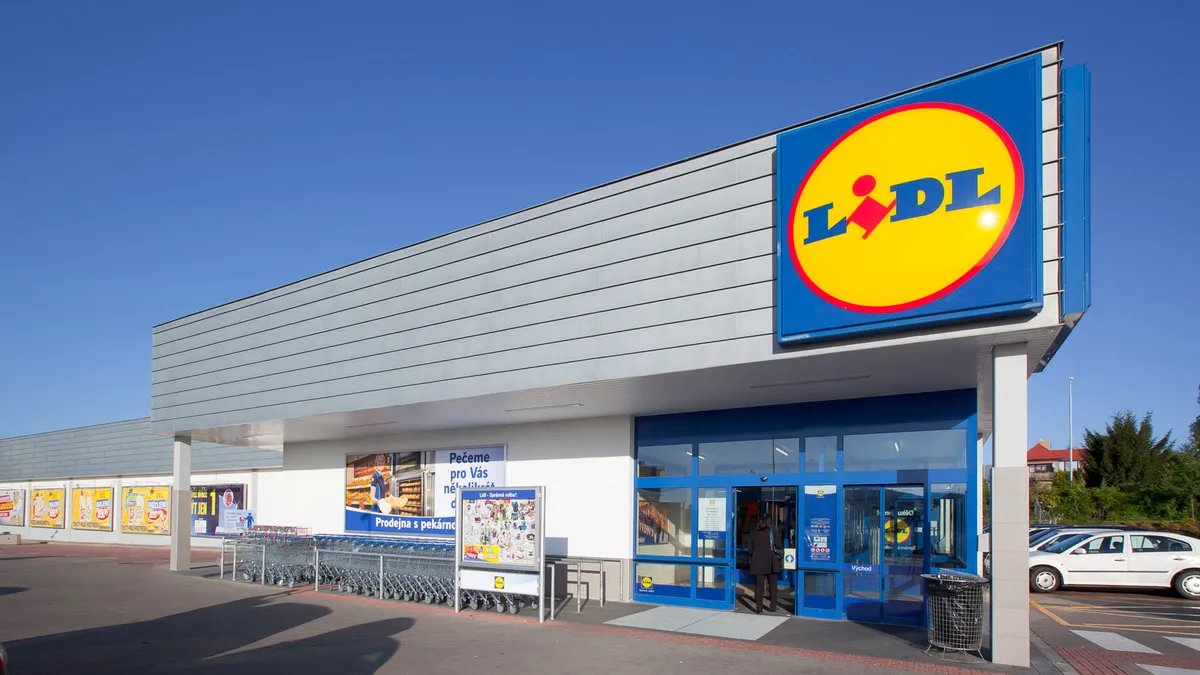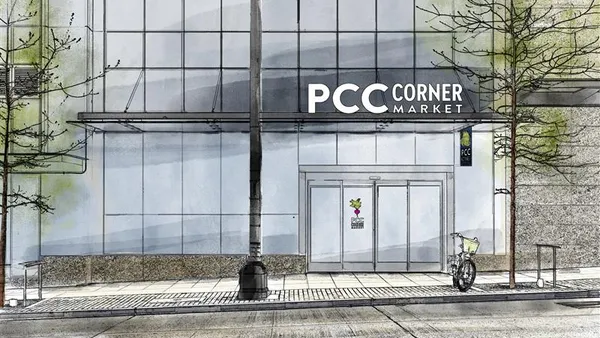Dive Brief:
- Lidl, which to this point has chosen to build and own most of its store locations, says it wants to lease smaller stores between 15,000 and 25,000 square feet in order to penetrate more East Coast markets, including urban areas, according to Winsight Grocery Business. These stores could be less than half the size of the 36,000 square-foot model it currently deploys in U.S. markets.
- The smaller stores would draw customers from a two-mile radius versus a three-mile radius under its current model, and would include parking for 100 customers versus 150, according to site specifications recently updated on Lidl’s website.
- The shift in real estate strategy comes amidst reports that Lidl is halting store development in several markets. A Virginia real estate developer told the News Leader that company officials told him they wouldn't be focusing on smaller markets. A spokesman for Lidl, however, told Supermarket News that is not the company's position.
Dive Insight:
According to Lidl, the changes to its real estate strategy are a natural outgrowth of its mission to reach more customers and fit into more markets up and down the East Coast. Having smaller stores gives it added flexibility to build in urban areas, and to build at a lower cost as market needs require.
Sources who have pointed out Lidl's stores are too big, would argue that this is primarily a reactionary move. According to multiple sources recently interviewed by Food Dive, the discounter's stores are overbuilt — big, costly, and filled with too many unconvincing nonfood and grocery items. Stores steadily lost customer traffic in the months following Lidl's U.S. opening, according to inMarket.
Sources interviewed by Winsight Grocery Business were also critical of the discounter's real estate strategy, which reportedly relied on company staffers rather than local brokers to manage site deals.
Lidl's U.S. stores are 35% larger than its European format, which averages around 21,000 feet. The company decided to go with the bigger format after market research determined it would need a broader assortment of products to succeed in the U.S.
Klaus Gehrig, CEO of Schwarz Group, which oversees Lidl, has disliked the splashier formats from the start, reportedly referring to them as "glass palaces."
"Every square centimeter of shelf space counts for us," he told the German magazine Spiegel.
The smaller stores will be more in Lidl’s wheelhouse, but they’ll require major changes in product assortment. So what stays and what goes? There seems to be unanimous sentiment against the retailer’s nonfood selection, which includes everything from driving mats to garden hoses and Heidi Klum apparel. The selection certainly differentiates Lidl, but American shoppers don’t quite seem to know what to make of it.
The discounter may also scale back on its grocery selections, which typically don’t offer a price advantage over competitors, according to The Hartman Group.
Lidl's bakery, meanwhile, has gotten high marks from customers and industry experts. Its selection of fresh produce, meats and dairy offer price advantages over competitors, Hartman research shows. Last month, according to Winsight Grocery Business, the discounter updated its fresh promotions from highlighting five items twice a week to six items for an entire week.













